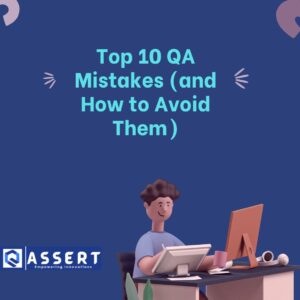Introduction
Enterprise Resource Planning (ERP) systems are essential tools for managing business processes, from finance and human resources to supply chain and customer relationship management. With such a broad scope of influence, it is crucial to ensure that your ERP system is functioning optimally. That’s where ERP testing comes in – a process designed to evaluate the system’s functionality, performance, and integration capabilities. This article explores the significance of ERP testing, its various types, and best practices to ensure success for your business.
Understanding ERP Testing
ERP testing is a vital phase in the implementation and maintenance of an ERP system. It aims to identify and resolve any issues, confirm that the system meets business requirements, and ensure smooth integration with other systems.
ERP testing is essential for:
- Verifying that the ERP system is functioning as intended
- Detecting and fixing bugs, errors, or security vulnerabilities
- Ensuring the system can handle real-world workloads
- Confirming that the system is user-friendly and efficient
- Validating that the system complies with industry-specific regulations and standards
Types of ERP Testing
There are several types of ERP testing, each with its specific objectives:
- Unit Testing: Evaluates individual components or modules to ensure they function as intended.
- Integration Testing: Ensures that the ERP system’s various modules work together seamlessly.
- Functional Testing: Assesses the system’s ability to meet business requirements and perform expected tasks.
- System Testing: Evaluates the system as a whole, testing for performance, stability, and reliability.
- Performance Testing: Measures how well the system performs under different workloads and environments.
- Security Testing: Identifies vulnerabilities and ensures that the system meets security standards.
- User Acceptance Testing (UAT): Validates that the system is user-friendly, efficient, and meets the needs of end-users.
ERP Testing Best Practices
To ensure a successful ERP testing process, follow these best practices:
- Develop a comprehensive test plan: Outline the objectives, scope, and timeline of the testing process, as well as the resources required.
- Prioritize risk-based testing: Focus on testing high-risk areas that could have the most significant impact on business operations.
- Establish clear communication channels: Keep stakeholders informed of the testing progress and any issues that arise, fostering collaboration and transparency.
- Automate repetitive tasks: Utilize automation tools to streamline the testing process and reduce human error.
- Perform regression testing: Regularly retest the system to ensure that updates, patches, or changes haven’t introduced new issues.
- Train and involve end-users: Involve end-users in the testing process to ensure the system is user-friendly and meets their needs.
The Role of Test Management Tools
Effective test management tools can streamline the ERP testing process by providing:
- Centralized platforms for test planning, execution, and reporting
- Integration with other systems and tools used in the testing process
- Automation capabilities for repetitive tasks
- Real-time visibility into test progress and results
- Collaboration features for team members and stakeholders
Conclusion
ERP testing is a critical component of the ERP implementation and maintenance process. By rigorously testing the system for functionality, performance, and integration, businesses can ensure that their ERP systems run smoothly, minimize disruptions, and support the organization’s goals. By adhering to best practices and utilizing test management tools, businesses can optimize their testing processes and maximize the return on their ERP investments.




